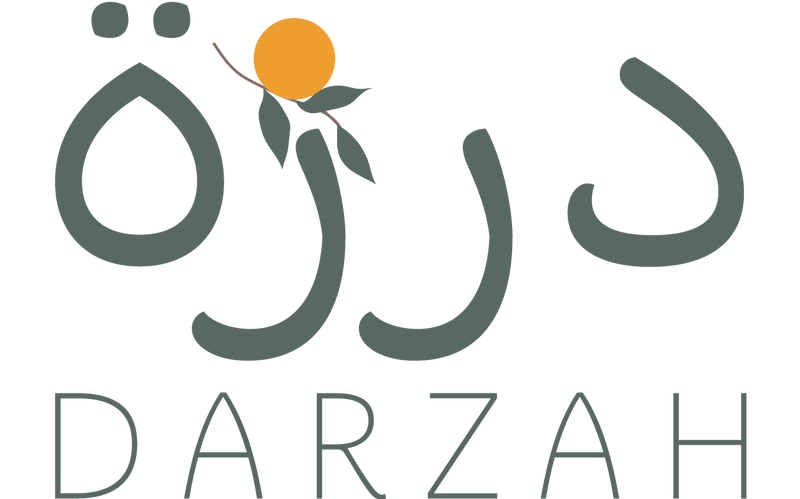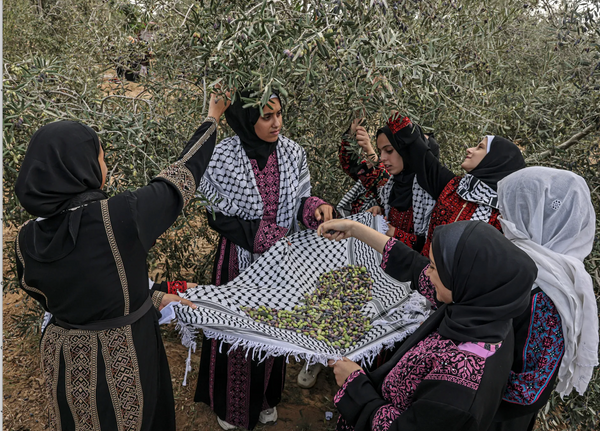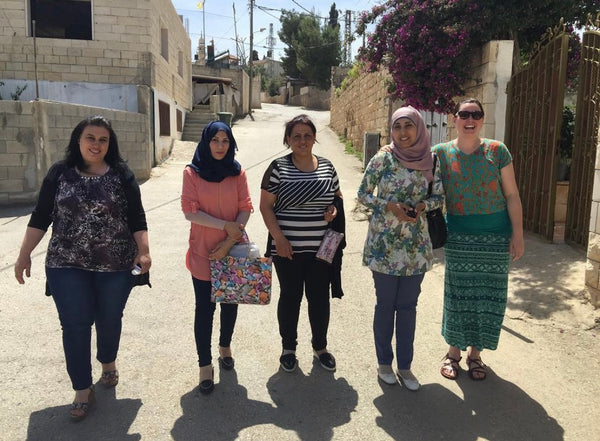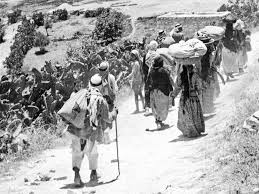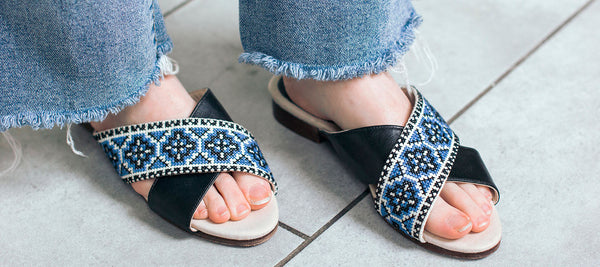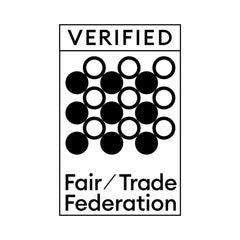Tahriri Embroidery: How is it Different than Tatreez?
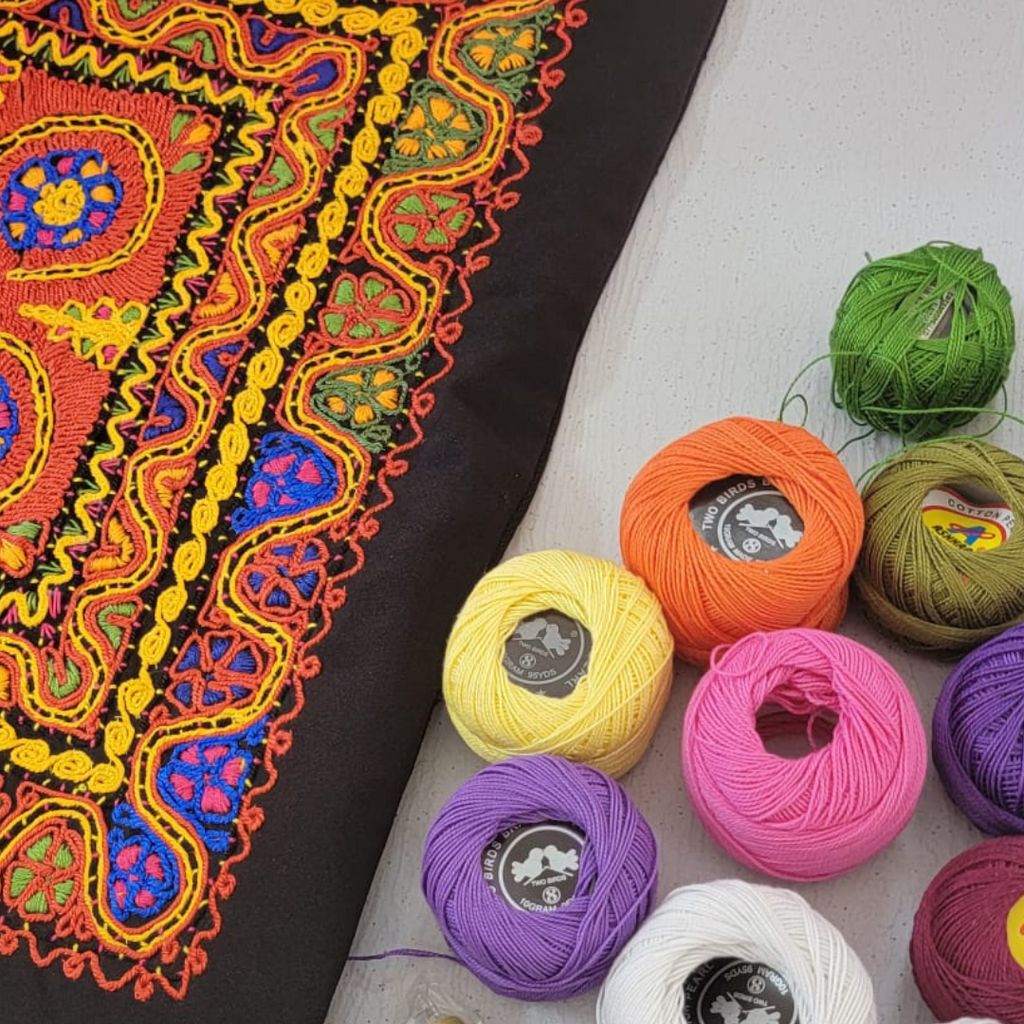
Tahriri embroidery is a traditional Palestinian embroidery technique, primarily practiced in the Bethlehem and Beit Jala regions. This unique style uses the couching stitch method, where a thicker thread is laid on the fabric’s surface and secured with smaller stitches. Unlike the popular Tatreez, which employs cross-stitching, Tahriri creates raised and textured designs. Traditionally, this technique adorned Palestinian wedding dresses and long dresses, symbolizing cultural pride and craftsmanship.

What is Tahriri embroidery? How is it different from Tatreez?
Tahriri stitching is a traditional form of Palestinian embroidery. Unlike tatreez embroidery, which is a type of cross stitching, tahriri utilizes a couching stitch technique, where a main thread is carefully laid along the surface of the fabric and secured in place with small stitches of a thinner thread. Historically, tahriri was primarily performed by the women of the Bethlehem/Beit Jala region, where they utilized this technique on the front panels of wedding dresses, side panels of skirts, and the cuffs of the long traditional Palestinian dresses.

The Rich History of Tahriri: Gold, Silver, and Silk
Historically, Tahriri embroidery was recognized for its use of luxurious materials such as gold and silver threads, as well as silk cords. These materials elevated the garments to a level of grandeur, particularly for special occasions like weddings. The origins of these rich materials were inspired by church ornaments and military uniforms during the Ottoman and British periods. Gold and silver were not merely decorative; they represented the prosperity and status of the wearer, making Tahriri embroidery a form of wearable art and heritage.
The delicate and intricate use of these expensive materials made Tahriri one of the most prestigious forms of Palestinian embroidery. However, access to these materials was and continues to be challenging. Artisans relied heavily on trade routes and specific suppliers for such precious materials, limiting widespread production.

Modern Adaptations: A Shift in Materials?
As times have changed, so have the materials used in Tahriri embroidery. Today, most Tahriri products—including those from Darzah—feature cotton threads instead of gold or silver. This shift is not only a reflection of practicality and accessibility but also a move towards sustainability and affordability. While the technique remains the same, the materials have been adapted to meet modern needs, allowing artisans to continue this heritage craft without the prohibitive costs of gold or silver.
For example, Darzah’s Tahriri Clutches and Tahriri Pillow Covers use locally sourced cotton blend fabrics and threads, maintaining the intricate designs while being more environmentally friendly and accessible to wider audiences. These modern adaptations allow Tahriri embroidery to stay relevant in today’s fashion industry while still honoring its historical roots.
Challenges in Preserving Tahriri Embroidery
Despite its cultural significance, Tahriri embroidery faces challenges in terms of preservation. The limited number of skilled trainers and the high costs of materials are significant barriers. Artisans face difficulties in securing high-quality threads and often have to travel long distances or source from limited suppliers. However, initiatives such as Darzah’s skills training program are helping to pass down this traditional craft to future generations, ensuring its survival amidst modern challenges.
Shop the Tahriri Collection:
|
|
|
|
|
|
|
|
The Modern Relevance of Tahriri
Today, Tahriri embroidery is being incorporated into contemporary designs, bringing traditional techniques into modern fashion. While it is less common than Tatreez, Tahriri’s luxurious and intricate nature makes it a standout feature in modern Palestinian-inspired fashion, especially in wedding attire, accessories, and home décor.
Designers and artisans are finding ways to blend the old with the new, using Tahriri in products that are not only beautiful but functional. Darzah’s Tahriri Lumbar Pillow Covers and Tahriri Clutches are examples of how this technique is being adapted to fit contemporary tastes while still preserving its cultural integrity.
FAQs About Tahriri Embroidery
-
What is Tahriri embroidery?
Tahriri is a Palestinian embroidery technique that uses couching stitches, where a main thread is laid on fabric and secured with smaller stitches to create textured designs. -
How is Tahriri different from Tatreez embroidery?
Tatreez uses cross-stitching with cotton threads, while Tahriri features couching stitches with thicker threads to create a raised, intricate pattern. -
What materials were traditionally used in Tahriri embroidery?
Traditionally, Tahriri embroidery was crafted using gold, silver, and silk threads, making it a luxurious and prestigious form of embroidery for special occasions. -
What materials are used in modern Tahriri products?
Today, Tahriri products, like Darzah’s clutches and pillow covers, use cotton threads and locally sourced fabric, offering a sustainable and accessible version of the traditional craft. -
Where is Tahriri embroidery typically used?
Tahriri embroidery was traditionally used in wedding dresses and long Palestinian garments, particularly in the Bethlehem and Beit Jala regions, but it is now also featured in modern accessories and home décor. - How does my purchase support women in Palestine?
Every purchase of Darzah’s Tahriri products provides fair wages and job opportunities for women artisans in the West Bank, helping to preserve traditional crafts while supporting economic empowerment.
